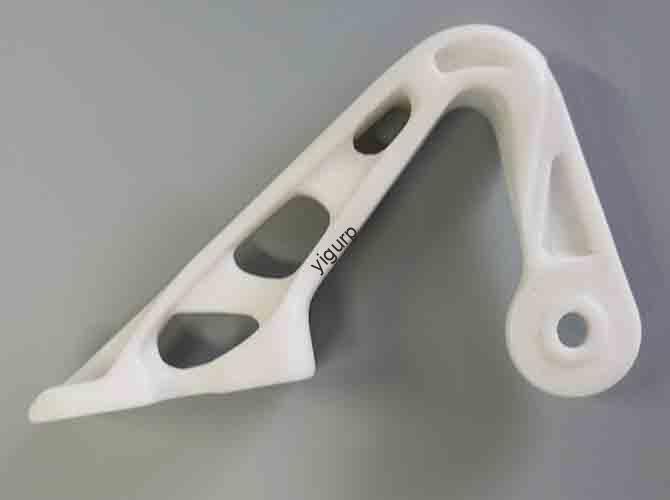In the era of smart manufacturing, 3D high-precision printing has redefined how industries create complex, componentes de alta calidad. Unlike traditional subtractive methods that carve away material, this technology builds objects layer by layer—unlocking possibilities for intricate designs, producción más rápida, and tailored solutions. This guide dives into its core principles, ventajas clave, Aplicaciones del mundo real, and why it’s a critical tool for forward-thinking businesses.
1. Core Principles of 3D High-Precision Printing
En su corazón, 3D high-precision printing relies on a “layer-by-layer deposition” proceso, driven by digital models (P.EJ., Archivos CAD). This approach eliminates the limitations of traditional manufacturing, where complex shapes often require expensive molds or multiple machining steps. Below is a breakdown of how it works, plus a comparison to subtractive methods.
1.1 Flujo de trabajo paso a paso
- Digital Modeling: Create a detailed 3D model using software (P.EJ., Solidworks, Fusión 360). The model is sliced into thousands of thin 2D layers (typically 10–100 microns thick).
- Preparación de material: Load specialized materials (plástica, rieles, cerámica) en la impresora 3D. Each material is optimized for precision—e.g., metal powders for aerospace parts, biocompatible resins for medical devices.
- Impresión de capa por capa: The printer deposits or cures one layer at a time. Por ejemplo:
- Powder-based systems (P.EJ., SLM) use lasers to fuse metal powder.
- Resin-based systems (P.EJ., DLP) use light to harden photosensitive resin.
- Postprocesamiento: Eliminar la pieza, exceso de material limpio, and apply finishing steps (P.EJ., heat treatment for metals, polishing for plastics) to enhance strength and precision.
1.2 3D High-Precision Printing vs. Traditional Subtractive Manufacturing
| Característica | 3D High-Precision Printing | Traditional Subtractive Manufacturing (P.EJ., Mecanizado CNC) |
| Uso de material | Desperdicio mínimo (Solo usa el material necesario) | Desecho (carves away up to 70% of raw material) |
| Complexity Support | Maneja las intrincadas geometrías (P.EJ., canales internos) | Struggles with complex shapes (requires multiple setups) |
| Tiempo de entrega | Rápido (prototypes in hours/days) | Lento (molds/tooling take weeks/months) |
| Personalización | Fácil (adjust digital model only) | Difícil (requires new tooling for each design) |
2. Key Advantages of 3D High-Precision Printing
What makes this technology a game-changer? Its four core strengths address critical pain points for industries like aerospace, Cuidado de la salud, and automotive—from reducing costs to enabling innovation.
2.1 Advantage Breakdown (with Data)
| Ventaja | Detalles & Impacto del mundo real |
| Micron-Level Accuracy | Achieves precision as low as 5–10 microns (0.005–0.01 mm)—critical for medical implants and aerospace components. Por ejemplo, dental crowns printed with this precision fit patients’ teeth perfectly. |
| Libertad de diseño inigualable | No shape restrictions: Print parts with internal lattices, estructuras huecas, or organic curves. This has enabled lighter aerospace parts (reducing fuel costs by 15–20%) and personalized medical devices. |
| Diverse Material Support | Works with over 100+ materiales, incluido: – Rieles: Titanio (para implantes), aluminio (para aeroespacial). – Plástica: Abdominales (para piezas automotrices), resinas biocompatibles (Para herramientas quirúrgicas). – Cerámica: Zirconia (for dental crowns), alúmina (for industrial sensors). |
| Shortened Production Cycles | Cuts lead times by 50–80% compared to traditional methods. Por ejemplo, automotive prototypes that once took 6 weeks to make can now be printed in 2–3 days—accelerating R&D. |
3. Real-World Applications of 3D High-Precision Printing
This technology isn’t just innovative—it’s practical. A continuación se muestran sus casos de uso más impactantes, with industry-specific examples.
3.1 Industria aeroespacial
- Lightweight Components: Prints titanium or aluminum parts (P.EJ., soportes, boquillas de combustible) that are 30–50% lighter than traditional parts. Esto reduce el peso de la aeronave, lowering fuel consumption by 10–15%.
- Complex Engine Parts: Creates turbine blades with internal cooling channels—impossible with CNC machining. These blades improve engine efficiency by 20%.
3.2 Healthcare Industry
- Custom Medical Devices: Produces personalized prostheses (P.EJ., artificial hips) and orthopedic stents. Using patient scans, parts fit perfectly—reducing post-surgery complications by 40%.
- Herramientas Quirúrgicas: Prints high-precision tools (P.EJ., biopsy forceps) with 10-micron accuracy. These tools are more durable than plastic alternatives and cost 30% Menos para producir.
3.3 Industria automotriz
- Prototipos rápidos: Tests new designs (P.EJ., componentes del tablero, manijas de las puertas) En días en lugar de semanas. This speeds up new car launches by 3–6 months.
- Customized Parts: Makes limited-edition parts (P.EJ., racing spoilers) for high-end vehicles. No tooling is needed—saving manufacturers $50,000+ por diseño.
Yigu Technology’s Perspective on 3D High-Precision Printing
En la tecnología yigu, nosotros vemos 3D high-precision printing as a catalyst for industrial transformation. Its ability to balance accuracy, velocidad, and material diversity helps our clients solve unique challenges—from creating lightweight aerospace parts to personalized medical devices. We’ve integrated this technology into our solutions to cut client lead times by 60% and reduce material waste by 50%. A medida que avanzan los materiales e impresoras, we expect it to become the standard for high-value manufacturing—especially in sectors where precision and customization are non-negotiable.
Preguntas frecuentes: Common Questions About 3D High-Precision Printing
- q: Is 3D high-precision printing only for small parts?
A: No. While it excels at small, piezas detalladas, industrial printers can produce large components (P.EJ., 1m x 1m aerospace panels) with the same precision. The key is choosing the right printer and material.
- q: Are 3D-printed high-precision parts as strong as traditionally made parts?
A: Yes—often stronger. Por ejemplo, metal parts printed via SLM have a 99.9% densidad (same as forged metal) and can withstand high temperatures. Postprocesamiento (P.EJ., tratamiento térmico) further boosts strength.
- q: How much does a 3D high-precision printer cost?
A: Prices vary by size and capability: – Desktop models (for small plastics): \(5,000- )50,000. – Industrial metal printers (para aeroespacial/médico): \(200,000- )2 millón. The cost is offset by lower material waste and faster lead times.
